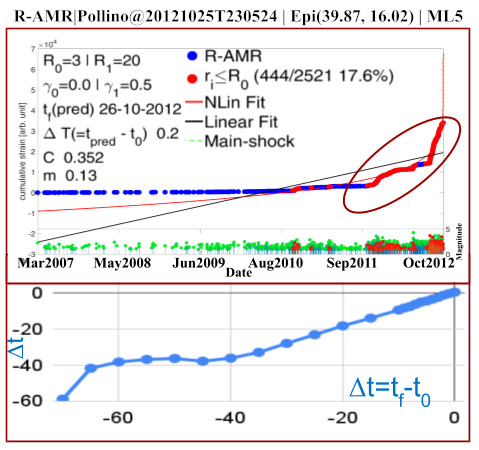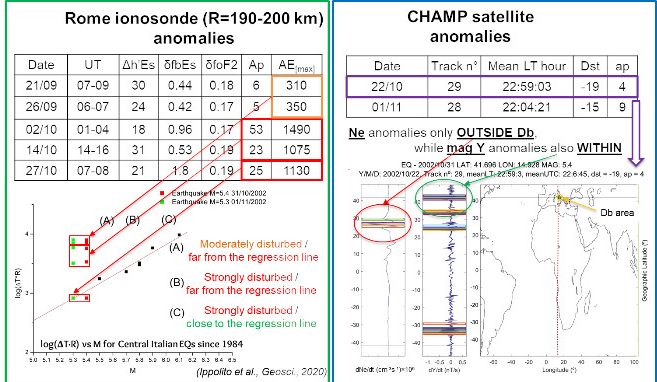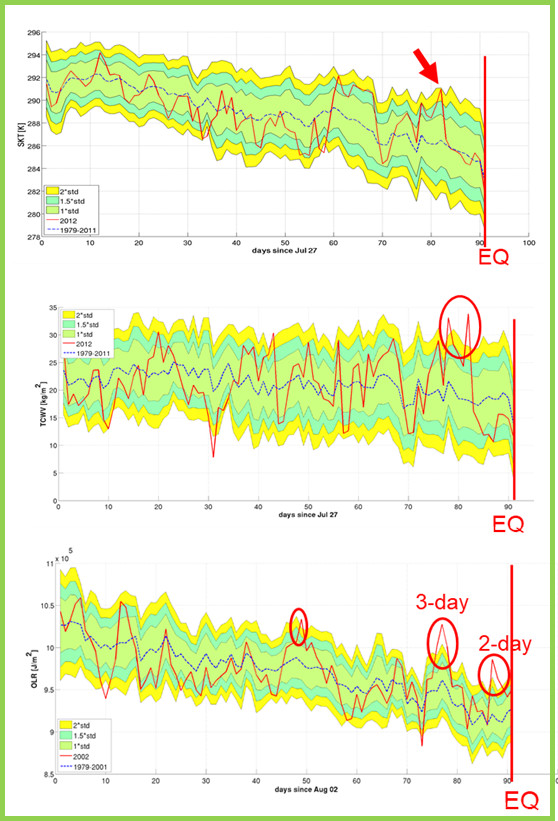WP 5 - Geospace
Participants: Gianfranco Cianchini (RM2), Angelo De Santis (RM2), Martina Orlando (RM2), Loredana Perrone (RM2), Alessandro Piscini (ONT), Dario Sabbagh (RM2),Maurizio Soldani (RM2)
The aim of this work package is to apply multi-parametric techniques to study the different geolayers coupling before intermediate-large earthquakes that is usually defined as LAIC (Lithosphere-Atmosphere-Ionosphere Coupling) studies.
Research activities include ionospheric (ground & satellite based), atmospheric and ground (seismic & magnetic) data with the objective of finding clues/evidence of the role of crustal fluids prior to earthquakes. Special attention is dedicated to the seismic sequences in the three Apennines regions of interest within the project.
SEISMIC DATA ANALYSES
We search for patterns of accelerated seismicity on occasion of several large seismic events in the Central-Southern Apennines.
Accelerating seismicity is quite common during the preparation process of earthquakes (EQs). It can be detected by the Accelerated Moment Release (AMR) method, and its recent Revised version (R-AMR), applied to earthquake catalogues. The R-AMR (De Santis et al., 2015) implies that we estimate, in a sufficiently large area, the collective but surely different effect of each EQ on the fault under study, according to its magnitude M and distance R from the fault.
IONOSPHERIC ANALYSES
The multiparametric analysis based on ionosonde measurements of sporadic-E and F2 layers parameters is applied (Perrone et al., 2010; Perrone et al. 2018; Ippolito et al. 2020), along with MASS algorithm (De Santis et al., 2017) adjusted to be applied to Earth magnetic (B) and electron density (Ne) satellite data from satellite, to identify possible coincident anomalies before EQs.
ATMOSPHERIC ANALYSES
Atmospheric and gases variables are simultaneously processed in order to identify possible persistent anomalies some days before the impending earthquakes related to the project case studies.
Climatological Analysis for Seismic PRecursor Identification (CAPRI) algorithm (Piscini et al., 2017; Piscini et al., 2019) is applied to ECMWF ERA and ECMWF CAMS climatological dataset.
In particular for ERA5 dataset we focus on physical variables related to thermal radiative interaction of atmosphere with surface, skin temperature (SKT), total column water vapour (TCWV), surface latent heat flux (SLHF), Outgoing Longwave Radiation (OLR).



